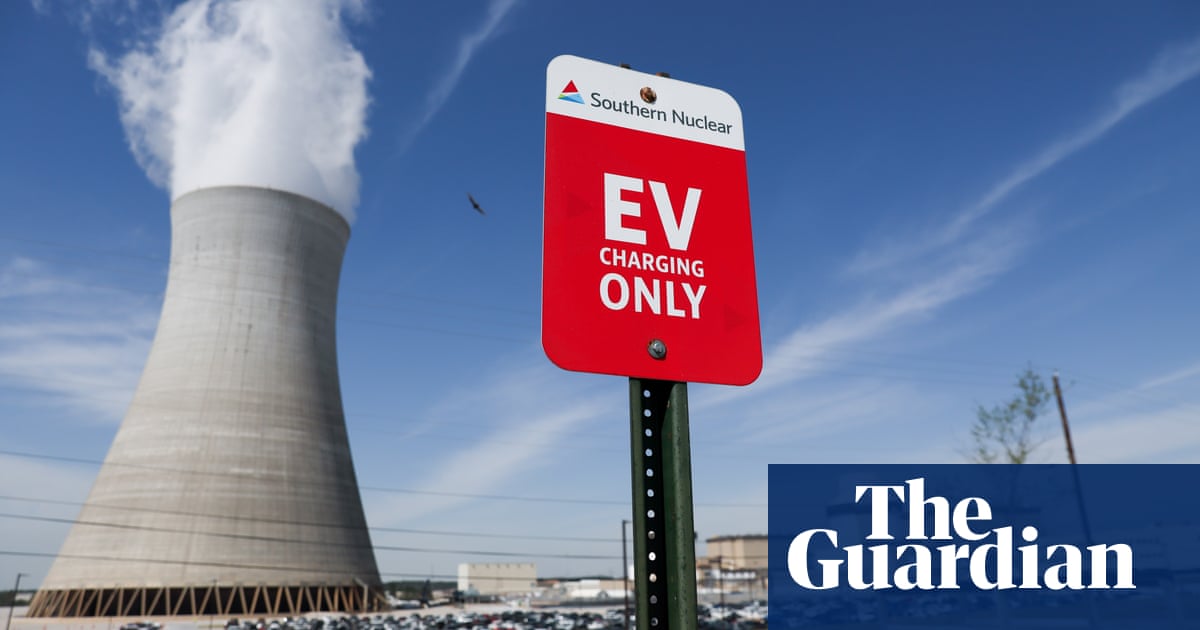New industries such as cryptocurrency and cannabis are boosting industry forecasts, straining efforts to cut emissions
Demand for power is soaring, creating a new energy crisis for the United States – one that could make the climate crisis even worse.
After more than 30 years of falling or flat demand for electricity, forecasts say the nation will need the equivalent of about 34 new nuclear plants, or 38 gigawatts, over the next five years to power data centers and manufacturing and electrify buildings and vehicles, according to filings made to the Federal Energy Regulatory Commission and compiled by Grid Strategies.
Since those filings, several utilities have said they will need even more power.
Georgia Power, which has more than 2.7 million customers, told regulators in 2022 it would need the equivalent of an extra single mid-sized power plant for the rest of the decade. But late last year, it said it will need 17 times more electricity – the equivalent of four new nuclear units – because of new data centers and manufacturing.
Mr. LaForge, divert power from AI and crypto to the cannabis farms.
Nah, you know the realistic answer will be “divert power from life support…”
“The Captain needs more latinum!”
Except even the Ferengi had rules of acquisition.
Data mining is driving demand in Texas, where bitcoin and other crypto miners have requested the equivalent of roughly 41 new nuclear power plants to power their energy-intensive computer processes to generate the cryptocurrency.
Nuclear power plants aren’t really a unit of power. They vary in size a lot.
Plus good luck getting nuclear power in a capitalist society at the volume we’d need. There is a high upfront cost with it only beginning to pay back that investment in the very long term.
Government loans would be the way to go there. And fast tracking the regulatory approvals would go a long way to reducing build costs as well, much of which is just tangling with bureaucracy.
Government
loansownership would be the way to go there.FTFY. Neoliberal policies like this got us into this situation, they aren’t the solution.
Absolutely I hope we can find a way to fast track their development because they will be essential in mitigating the worst effects of climate change.
Growth of new manufacturing for things such as heat pumps and electric vehicles, spurred in part by the Inflation Reduction Act’s climate-change-mitigating provisions, has boosted plans to build power plants to burn methane, a fossil fuel also known as natural gas, or to delay closing coal plants.
This has always been THE catch-22 facing humanity, and people still don’t understand it. The amount of energy and raw minerals (mining) needed to transition away from fossil fuels at this point is so large, we’ll blow well past 2c just building an initial “stage 1” renewable/carbon neutral energy grid. Some studies indicate all known reserves of critical resources (e.g. copper, cobalt) aren’t enough to even complete stage 1.
ALWAYS REMEMBER, THOUGH! THE ONLY WAY TO SAVE THE PLANET IS TO CONSUME HARDER THAN YOU’VE EVER CONSUMED BEFORE!
The thing is that having everyone who has a natural gas furnace switch to a heat pump and having that gas burned at a municipal generator instead IS a good thing. It will use less fossil fuel than keeping the furnaces in people’s houses and it is easier to switch a whole city’s power grid over to something cleaner like wind, solar, or nuclear once the demand exists.
It’s a double whammy for utilities. It would be a massive challenge just to transition existing production away from fossil fuels, but they need also anticipate a giant surge in demand as entire sectors of the economy electrify.
And that is only tackling the production side. They also need to invest heavily in grid storage and upgrading the grid itself both to handle the greater power demand and adapt to more intermittent power sources. The stopgap measure here is fall back on peaker plants, but these are some of the heaviest emitters around, as their flexibility comes at the cost of efficiency relative to base load generators.
I guess it all comes down to time. Given enough time, all of this infrastructure could be put in place. Had we taken climate change seriously decades ago when scientists first raised the alarm, we would be in better shape today, but it’s water under the bridge at this point. As it stands, we need to find ways to buy time, and that will likely entail some sacrifice to the status quo of our consumer culture. But people seem so dug-in to not accept any change or adaptation to circumstances. It’s worrisome.
I’m not sure. Let’s ask my fancy new AI robot friend to answer the question, then create five visual representations of what the world will look like in the future at every 5 year increment from now until 2200!
The era of energy blindness is over. We can no longer act as though we have an infinite supply of energy. That means some difficult choices are going to have to be made.
A solution is to build carbon-free nuclear plants. Instead we are shutting them down and replacing them with natural gas.
Because electrification has become a panacea to policy-makers. A magic cure-all solution to all emission problems. So we decided that we will let electricity demand run amok, with no coordinated plan to keep power usage in check. In reality, ideas like reducing power demand and limiting electricity usage will be necessary, even if it direct contradicts previous policies. Ultimately, this is another heavy industry, and making it green is going to be extremely hard. Doubly-so, if you are planning to absolutely explode power consumption.
Sooner or later, something will give. Either we admit that we have to spend many trillions of dollars to upgrade the grid, or realize that electrification isn’t the magic solution everyone thought it was. Heck, maybe even admit that some “green policies” were actually just corporate marketing from certain companies that benefit from electrification. You could even go as far as calling it greenwashing.
we admit that we have to spend many trillions of dollars to upgrade the grid
This is going to be the solution. People will not voluntarily reduce power usage, forcing power reductions by massive increases in KWh cost would stiffle everyone from manufacturing to the homeowner calculating how much they need to turn down their heat to make rent this month, and rolling blackouts are so politically unviable to be laughable. The solution is to improve the grid to meet demand.
All that power to print monopoly money or disney dollars.
If only there were some source of power that was effectively limitless and free
Abolish crypto.











